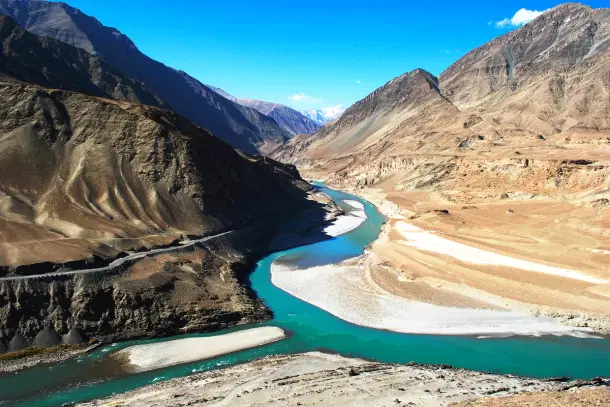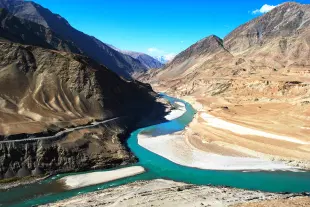News Brief
Indus Waters Treaty Suspension Effect: India Moves Ahead With 1,856 MW Chenab Project Opposed By Pakistan For Decades
Swarajya Staff
Aug 01, 2025, 08:38 AM | Updated 08:37 AM IST
Save & read from anywhere!
Bookmark stories for easy access on any device or the Swarajya app.


India has invited global tenders for the construction of the long-pending Sawalkote Hydroelectric Project on the Chenab river, leveraging the current abeyance of the Indus Waters Treaty with Pakistan, Times of India reported.
The project—originally conceived in 1984 and designated as nationally significant—had been stalled for decades due to Pakistani objections under the treaty, as well as local administrative, environmental, and compensation hurdles.
The National Hydroelectric Power Corporation (NHPC) on Wednesday began the international competitive bidding process for the planning, design, and engineering of the 1,856 MW project, located near Sidhu village in Jammu and Kashmir’s Ramban district.
The deadline for bid submission is 10 September.
Sawalkote is India’s largest run-of-river hydropower project and is seen as a major strategic move to maximise India’s utilisation of Indus basin waters during the suspension of treaty obligations.
The 1960 Indus Waters Treaty had allocated control of the Beas, Ravi, and Sutlej rivers to India, and the Indus, Chenab, and Jhelum to Pakistan—while allowing limited Indian use of the western rivers.
J&K Chief Minister Omar Abdullah, who also holds the power portfolio, called the development a long-overdue breakthrough.
“The project was originally conceived in the 1980s, but it was shelved after some time. In 1996, Dr Farooq Abdullah attempted to revive it with the help of a Norwegian consortium but that effort didn’t succeed. Later, during my previous tenure, we tried to initiate the project again, but it encountered certain hurdles,” he said, recalling that it was later shelved during Mufti Mohammad Sayeed’s tenure.
The estimated cost of the project is Rs 22,704.8 crore, to be developed in two stages.
Ramban MLA Arjun Singh Raju, who first announced the tendering move, hailed it as a “historic moment,” adding, “Sawalkote power project is the biggest in the country. Once completed, it will benefit not just Jammu and Kashmir, but the entire nation.”
He credited CM Abdullah for pushing through the deadlock and confirmed that key issues—including compensation for 13 affected villages, relocation of an Army transit camp, and forest land clearances—have now been resolved.
Earlier this month, the Forest Advisory Committee granted in-principle approval for the diversion of 847 hectares of forest land. Raju also noted that NHPC has received a relaxation on the previously contentious water cess.
After being handed to NHPC in 1985, the project was transferred to the Jammu & Kashmir State Power Development Corporation (JKSPDC) in 1997. Around Rs 430 crore was spent by JKSPDC on enabling infrastructure, but no core construction was initiated.
The project was finally revived in 2021 through a memorandum of understanding with NHPC to develop it under a build-own-operate-transfer (BOOT) model.





